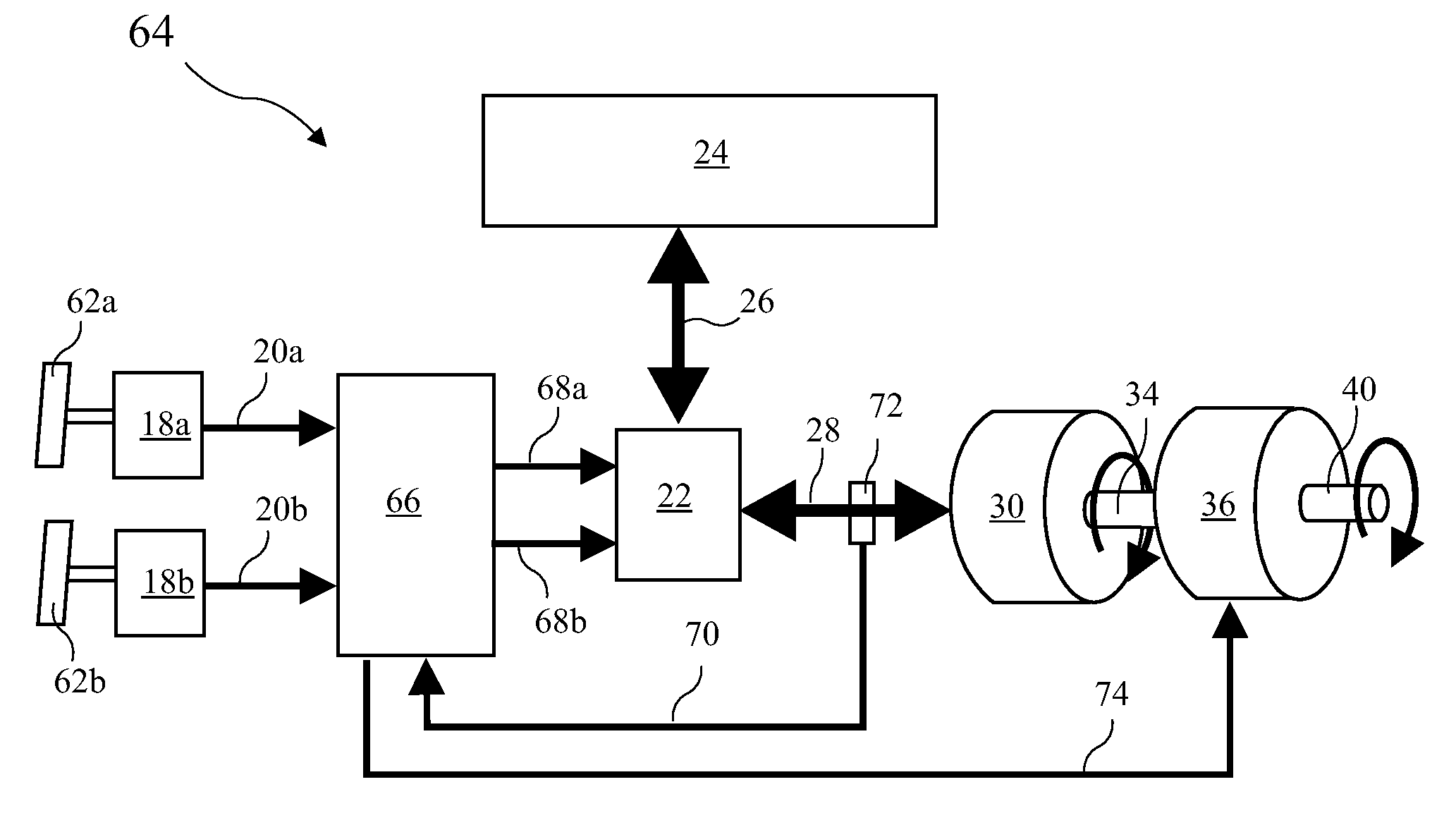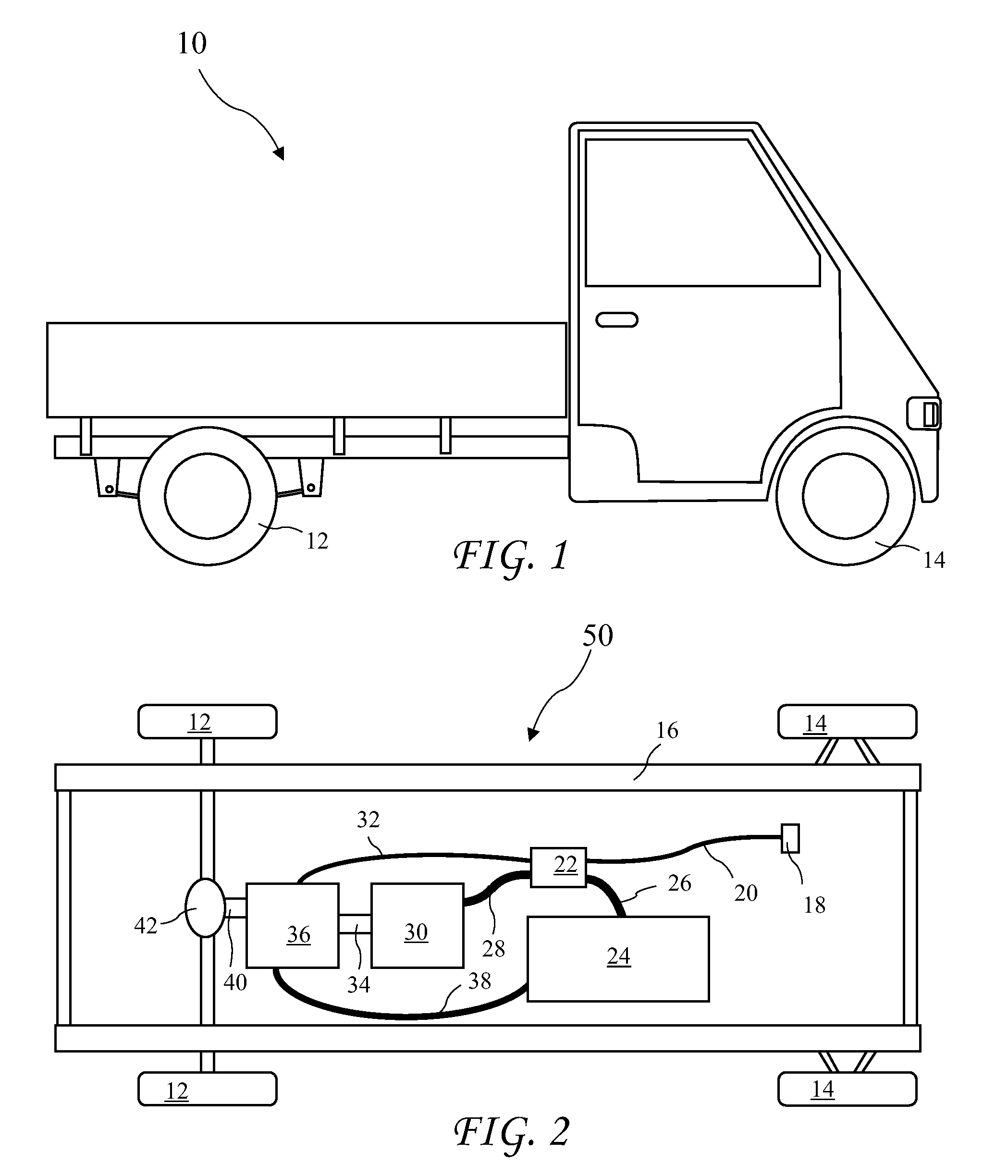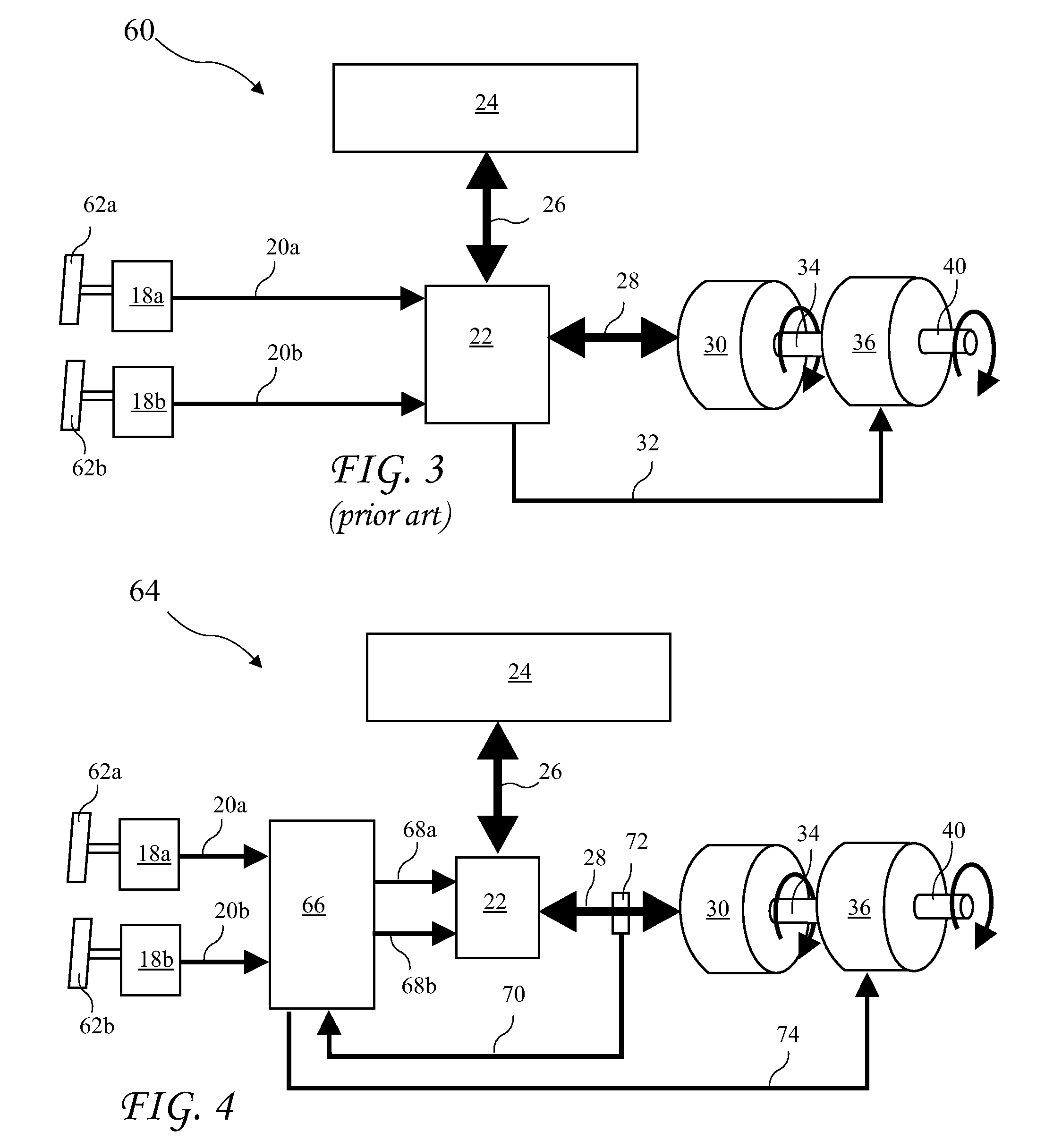Electric Vehicle Control
a technology for electric vehicles and control circuits, applied in the direction of motor/generator/converter stoppers, process and machine control, emergency protective circuit arrangements, etc., can solve problems such as external sensors, and achieve the effects of extending battery life, minimizing wear on parts, and reducing power consumption
- Summary
- Abstract
- Description
- Claims
- Application Information
AI Technical Summary
Benefits of technology
Problems solved by technology
Method used
Image
Examples
Embodiment Construction
[0049]The following description is of the best mode presently contemplated for carrying out the invention. This description is not to be taken in a limiting sense, but is made merely for the purpose of describing one or more preferred embodiments of the invention. The scope of the invention should be determined with reference to the claims.
[0050]An electric vehicle 10 suitable for application of the present invention is shown in FIG. 1 and a drivetrain 50 according to the present invention and suitable for use in the vehicle 10 is shown in FIG. 2. The drivetrain 50 includes a drive shaft 40 and an axle 42 connected to drive wheels 12 for driving the vehicle 10. Operator controls 18 are used by an operator to control the driving force provided by the wheels 12. The controls 18 may be foot control, hand controls, or any form of control useable by an operator. In an instance of a remotely controlled vehicle 10, the controls 18 may be a signal receiver. The controls 18 are connected by ...
PUM
 Login to View More
Login to View More Abstract
Description
Claims
Application Information
 Login to View More
Login to View More - R&D
- Intellectual Property
- Life Sciences
- Materials
- Tech Scout
- Unparalleled Data Quality
- Higher Quality Content
- 60% Fewer Hallucinations
Browse by: Latest US Patents, China's latest patents, Technical Efficacy Thesaurus, Application Domain, Technology Topic, Popular Technical Reports.
© 2025 PatSnap. All rights reserved.Legal|Privacy policy|Modern Slavery Act Transparency Statement|Sitemap|About US| Contact US: help@patsnap.com



